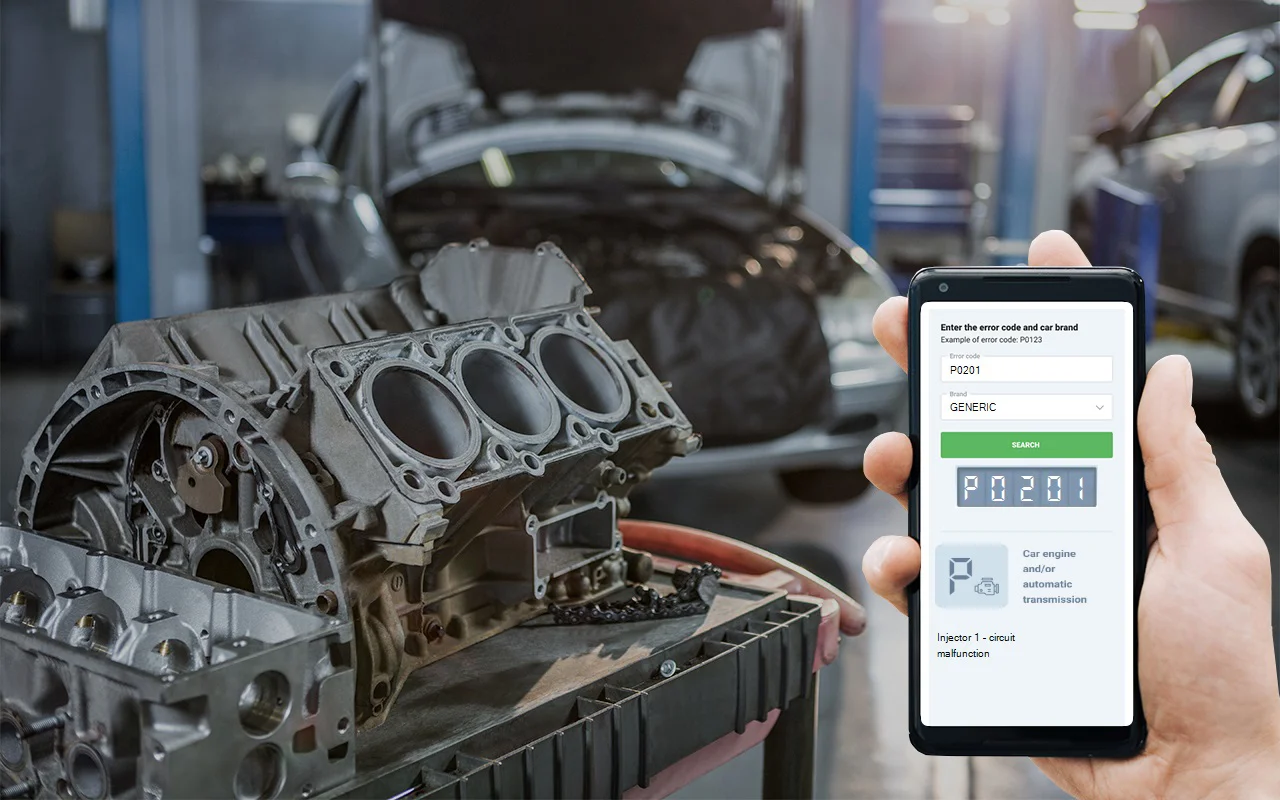Whenever I see a P0201 code pop up, I know the car’s telling me something’s off with the fuel injector circuit on cylinder number one. Your vehicle’s computer-what we call the PCM-is constantly checking the health of this circuit, making sure everything’s running just right. If there’s an open circuit, a broken or frayed wire, maybe a loose plug, or even if the injector itself just isn’t kicking in, the PCM throws this code. The whole point here is to keep every cylinder firing perfectly, so any hiccup in the circuit for number one can mess with the whole engine’s rhythm. I’ve seen this code show up on all sorts of makes and models, but the bottom line is always the same: that #1 injector isn’t getting the power or signal it needs to do its job.
DTC P0201
Causes of obd code P0201
From experience, I can tell you that most often, p0201 is caused by one of a few things. Here’s what I usually find when I’m tracking down this code:
- A faulty fuel injector on cylinder 1-sometimes the coil inside just burns out.
- Wiring problems, like broken or corroded wires, or loose connectors in the injector circuit.
- A problem with the PCM itself, though that’s less common-sometimes it’s a software glitch or a failed driver inside the computer.
In cases like this, it’s usually something simple like a bad connection or a failed injector, but it’s important to check everything before jumping to conclusions.
Symptoms and dtc P0201
If you’ve got a dtc p0201, you’ll probably notice a few things right away. The check engine light will come on, of course, but you might also feel the engine running rough, especially at idle. You could notice it misfiring-kind of a stumble or shake-and your fuel economy might take a hit. Sometimes, it’s subtle, but other times the engine will feel like it’s really struggling, especially when you try to accelerate. If you’re noticing any of these, don’t ignore them-things can go south quickly if overlooked.

Diagnosis and P0201 trouble code
Here’s how I personally go about diagnosing a P0201 trouble code, step by step:
- First, I always start by checking the basics-pop the hood and inspect the wiring and connector at the #1 injector. Look for any obvious signs of damage, corrosion, or loose connections. Sometimes just wiggling the connector can make a difference.
- Next, I use a test light or multimeter to check for voltage at the injector connector with the key on. One side should have battery voltage-if not, there’s a wiring issue upstream, maybe a blown fuse or relay.
- Then, I check the ground side. With the engine cranking or running, the PCM should be pulsing the ground. You can use a noid light or a scope for this, but even a test light can show if it’s being triggered.
- If the wiring checks out, I’ll test the injector itself. Unplug it and measure the resistance across the two terminals-compare it to the spec in the service manual. If it’s open or way off, the injector is bad.
- If everything else looks good, but the problem persists, I’ll check for PCM issues-sometimes a software update or, rarely, a replacement is needed. But honestly, that’s the last thing I suspect.
It’s best to start with something simple, and don’t forget to double-check your work as you go. If you’re not comfortable with electrical testing, it’s better to have someone assist you.

Common Mistakes with P0201 engine code
I’ve seen a lot of folks jump straight to replacing the injector without checking the wiring or connectors first. That’s a surefire way to waste money if the problem is just a loose pin or corroded terminal. Another common mistake is not checking for blown fuses or a bad relay supplying power to the injectors. Skipping the basics can really trip you up. Also, don’t forget to compare the resistance of all the injectors-sometimes the problem is intermittent and only shows up under certain conditions.

Seriousness of obd2 code P0201
This is one of those issues you really don’t want to put off. A misfiring cylinder can cause raw fuel to enter the exhaust, which can damage your catalytic converter-a very expensive part to replace. Plus, driving with a misfire can lead to poor performance, higher emissions, and even engine damage over time. Honestly, it’s dangerous to ignore this, especially if the engine is running rough or stalling. You don’t want this kind of trouble on the road.
Repair methods for P0201 code
Most of the time, the fix is pretty straightforward. Here’s what I typically do to resolve obd p0201:
- Repair or replace any damaged wiring or connectors at the #1 injector.
- Replace the fuel injector if it’s found to be faulty or out of spec.
- Clear the code and test drive to confirm the repair.
- If the problem is with the PCM (rare), update the software or replace the PCM as needed, following OEM procedures.
Always make sure to use quality parts and double-check your work before wrapping up.
Conclusion
To sum it up, P0201 means there’s a problem with the fuel injector circuit on cylinder 1-usually a wiring issue or a bad injector. It’s important to diagnose and repair this promptly because ignoring it can lead to bigger, more expensive problems. Start with the simple checks, work methodically, and don’t skip steps. In my experience, fixing the root cause-whether it’s a connector, wire, or injector-gets you back on the road safely and keeps your engine running its best.




